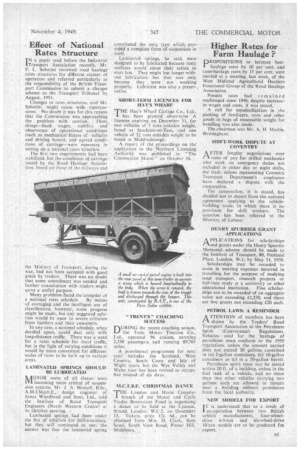Effect of National Rates Structure I N a paper read
Page 35

If you've noticed an error in this article please click here to report it so we can fix it.
before the Industrial Transport Association recently, Mr. F. L. Sabatini reviewed road -haulage rates structures for different classes of operation and referred particularly to the responsibility of the British• Transport Commission to submit a charges scheme to the TransportTribunal by August, 195 I.
Changes in rates structures, said Mr. Sabatini, might cause wide repercussions. No doubt it was for this reason that the Commission was approaching the problem with caution. Three_ things—fixed wages, stability and observance of operational conditions (such as mechanical fitness of vehicles and driving hours). and agreed conditions of carriage—were necessary in setting up a nationaLrates structure.
The first two requirements had been stabilized. but the conditions of carriage: issued lay the Road Haulage Association. based on -those of the railways anJ
the Ministry of Transport, during the war, had not been accepted with good grace by traders. There was no doubt that some amendment was needed and further consultation with traders might serve a useful purpose.
Many problems faced the compiler of a national rates schedule. By means of averaging and the intelligent use of classification, however, some progress might be made, but any suggested solution would be open to severe criticism from hauliers and their customers.
In any case, a national schedule, when decided upon, could deal only with long-distance traffic. There was a need for a rates schedule for local traffic, but in the light of varying conditions it would be more convenient for different scales of rates to be built up in various areas.




















































































